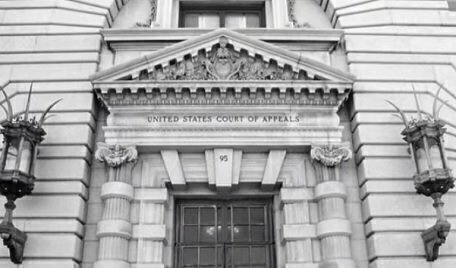President Donald Trump created some confusion on Wednesday with his Twitter criticism of the “Ninth Circuit” for ruling against his sanctuary cities policies, when a lower court system judge handed down a decision.
 “First the Ninth Circuit rules against the ban & now it hits again on sanctuary cities-both ridiculous rulings. See you in the Supreme Court!” Trump said on his official Twitter account. “The Ninth Circuit, which has a terrible record of being overturned (close to 80%). They used to call this ‘judge shopping!’ Messy system.”
“First the Ninth Circuit rules against the ban & now it hits again on sanctuary cities-both ridiculous rulings. See you in the Supreme Court!” Trump said on his official Twitter account. “The Ninth Circuit, which has a terrible record of being overturned (close to 80%). They used to call this ‘judge shopping!’ Messy system.”
In addition, White House Chief of Staff Reince Priebus criticized the “Ninth Circuit” for its ruling. "Again, it's the 9th Circuit going bananas," Priebus said. "We'll win at the Supreme Court level at some point."
On Tuesday, U.S. District Judge William Orrick said that President Trump’s executive order from January 25 to withhold all federal funding from local "sanctuary" jurisdictions wouldn’t likely survive an appeals court challenge. "The Constitution vests the spending powers in Congress, not the President, so the Order cannot constitutionally place new conditions on federal funds," Orrick wrote in his opinion.
Officially, Orrick is a United States District Judge for the United States District Court for the Northern District of California. Appeals related to decisions made by the Northern District of California court are heard by a different court, the Ninth Circuit Appeals Court.
So, are Trump and Priebus technically incorrect when they refer to Judge Orrick issuing a decision from the Ninth Circuit? That really depends on how one interprets the words “Ninth Circuit” in their comments.
The Constitution’s Article III established the Supreme Court and called for Congress to pass laws to establish and fund other federal courts. “The judicial Power of the United States, shall be vested in one supreme Court, and in such inferior Courts as the Congress may from time to time ordain and establish,” says Article III, Section One.
Currently, there are 94 district level trial courts that are part of the federal system. These district trial courts are organized into 12 regional circuits. Judge Orrick’s court is located in the San Francisco area and it was first established in 1850. It hears cases from 15 counties and has 14 Article III judges, including Orrick.
In this case, Orrick’s court is part of an organizational region called the United States Courts for the Ninth Circuit, which contains nine states and two territorial possessions. In all, there are 15 districts within the Ninth Circuit region, since California and Washington state have several districts.
In addition to trial and bankruptcy courts, the Ninth Circuit has its own court to hear appeals from lower federal courts within the circuit. The U.S. Courts of Appeals for the Ninth Circuit is also just one of two federal appeals courts to allow cameras and audio recorders in the courtroom.
The Ninth Circuit Appeals Court currently has 18 judges appointed by Democrats and seven appointed by Republicans, with four vacancies that can be filled by President Trump.
In regards to the controversy over President Trump’s proposed limited immigration ban, federal Judges in Hawaii and Washington state have ruled against the Trump administration. These courts are part of the Ninth Circuit organizational area. An initial appeal heard by a three-judge panel in the Ninth Circuit Appeals Court also went against the current Justice Department, and the case remains there for more litigation.
From all indications, Judge Orrick’s decision about sanctuary cites will be appealed by the Justice Department to the Ninth Circuit Appeals Court in the near future, but that case has not yet been heard and decided by that court.
In the end, the Supreme Court could take both cases, if they are appealed to the high court by the losing sides. The 80 percent “overturn” rate mentioned by President Trump refers to cases originating in the Ninth Circuit actually accepted by the Supreme Court. According to Politifact, the Supreme Court overturns about 70 percent of the cases it accepts. But if the volume of all cases determined by Ninth Circuit courts is considered, “far less than one percent” of cases heard in the Ninth Circuit region are overturned.
Scott Bomboy is the editor in chief of the National Constitution Center.
Other Recent Constitution Daily Stories
Government shutdown 101: Why they happen and what is closed
Judge blocks cutoff of federal funds to “sanctuary cities”
A landmark gerrymandering case heading toward the Court’s next term







